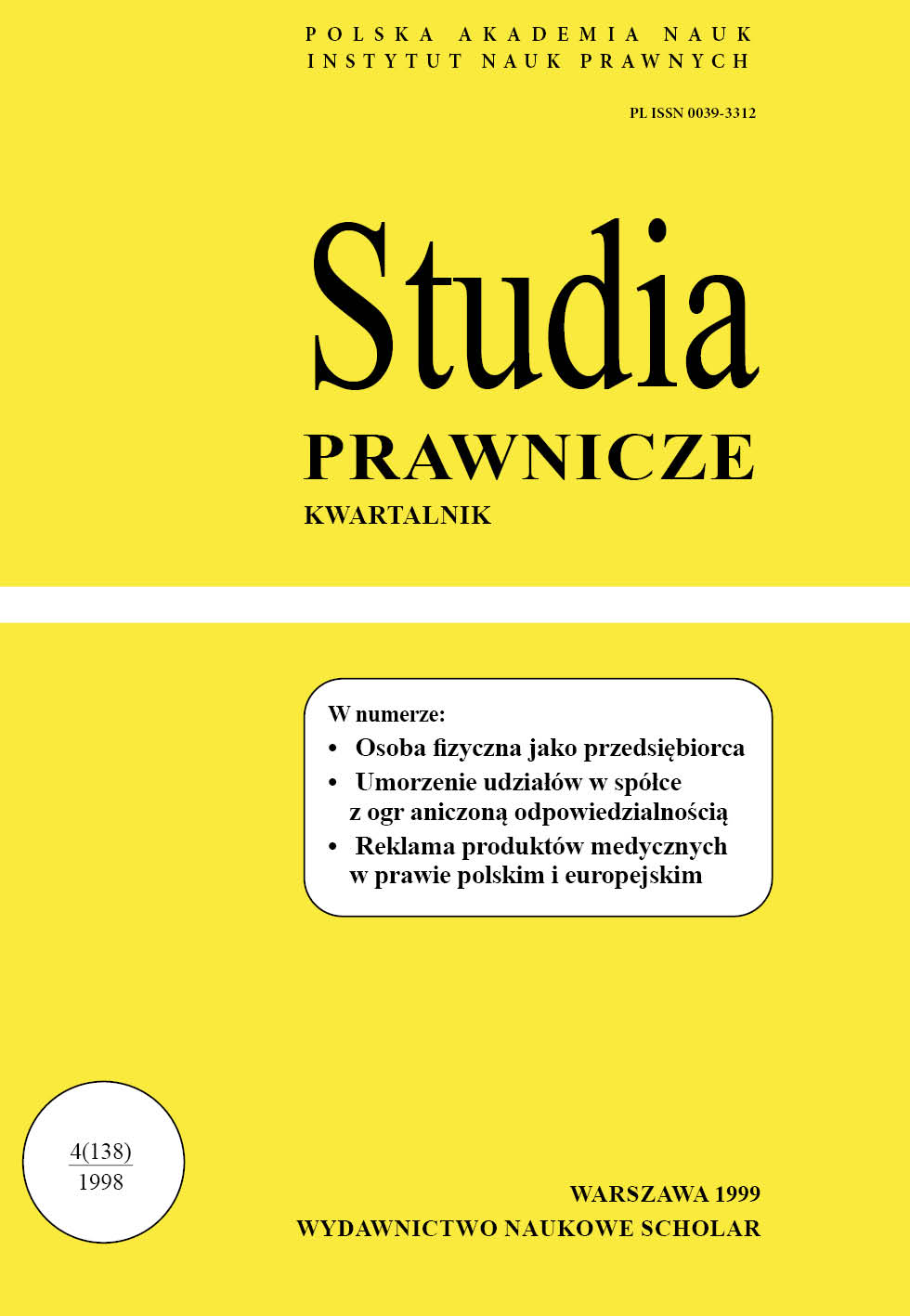Reklama produktów medycznych w prawie polskim i europejskim
Advertising of medical products in Polish and European law
Author(s): Robert SaganSubject(s): Law, Constitution, Jurisprudence
Published by: Instytut Nauk Prawnych PAN
Keywords: advertisement; community law of the European Union; medical products
Summary/Abstract: Medical journals are periodical publications – journals and magazines, as well as publications that appear irregularly or even on a one-off basis. The nature of the publication is determined by the issues raised, the type of vocabulary used by the writing, the audience to which it is addressed and the publisher. It is, however, not necessary that accessibility to the magazine be limited, although this would be indicative of its specialised nature, particularly in the context of limited access to published advertising.In the light of Article 4 of the Pharmaceuticals Act, any utterance which has the purpose of inducing potential recipients to purchase or otherwise use such products is to be regarded as advertising of medical products. Lege non distinguente – the concept of advertising of medical products includes both activities directly and only indirectly relating to these products. The specific action can take the form of utterance propagated through the mass media (mass advertising): press, television, radio, cinema, posters, leaflets, information disseminated on the occasion of promotional meetings and scientific congresses.The purpose of the prohibition [of advertising under Article 4(2) of the Pharmaceuticals Act] is to protect against attempts to undertake self-medication for potentially serious conditions. This prohibition is a relative prohibition, i.e. its scope is limited to the mass media. It should therefore be assumed that other forms of advertising are fully permissible.The scope of the prohibition [on the advertising of medicines under § 2(3) of the 1994 Ordinance on Principles and Forms of Advertising and Communication of Pharmaceuticals and Medical Supplies] is limited to advertising to the average consumer, as it would be difficult to reconcile with the purpose of advertising to professionals. The prohibition applies to advertising of prescription and non-prescription medicines, regardless of the medium, and does not apply to information.The differences between advertising and sponsorship are encapsulated in the generally different techniques of communicating with the audience, the different nature of the statement, which does not refer directly to the product but only to the sponsor, the different direct objective (which is to shape the sponsor's image) and the fact that the sponsor is essentially "behind" the sponsored entity, through whom it communicates with the audience.There is no direct provision prohibiting [the recommendation of medicines by actors playing doctors in adds], however, it appears to be in conflict with the principles laid down in Article 16 of the Act on Combating Unfair Competition. This is because such advertising is non-substantive, as it appeals to feelings, fears and even superstitions instead of rational assessment. Furthermore, where the role of the doctor is given to a person unknown to the general public, such advertising is misleading as to the actual profession of the person depicted.
Journal: Studia Prawnicze
- Issue Year: 138/1998
- Issue No: 4
- Page Range: 77-107
- Page Count: 31
- Language: Polish

